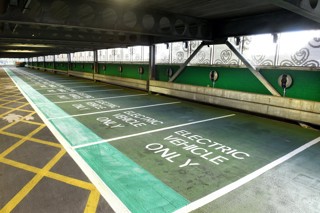A new study by Field Dynamics has found that fewer on-street electric vehicle (EV) chargepoints may be required than previously expected, to support a mass uptake of EVs.
Working in partnership with Zap-Map, the Net Zero data consultancy has found that better residential charging services can be achieved by siting chargers in more focused locations.
Field Dynamics' managing director Ben Allan said: “Placing public chargers is a difficult process as it requires the balancing of many conflicting priorities. But now there is a bedrock of robust data that planners can use to select their sites, placing fewer chargers at lower cost while providing a much more inclusive service”
The research found that there are around eight million households, outside of London, that do not have off-street parking and 90% of those are more than a five-minute walk from the nearest public EV chargepoint.
Field Dynamics said such proximity from a chargepoint could reduce the appeal of switching to e-mobility for those households, due to inconvenience or impracticality.
Brighton and Hove Council have achieved 67% coverage of households that require on-street charging provision by placing just 139 chargers, however.
This suggests that most councils will require a few hundred charger sites to ensure there is access to a charger within a five-minute walk for those residents who will need to access this critical service, rather than placing them on every street.
Zap Map COO and joint MD of Zap Map Melanie Shufflebotham said: “Providing convenient public charging for households with no off-street parking is a key element in the mass uptake of electric vehicles (EVs).
“This unique analysis combining the Zap-Map and Field Dynamics data sets provides both a high-level comparison between towns and also identifies down to a street level where there is a real gap in charging provision. We believe this data will be a great tool for organisations when making decisions on where to install additional charge points.”
An interactive map of the results can be found here, more details of the study including a white paper can be found here.




















Login to comment
Comments
No comments have been made yet.